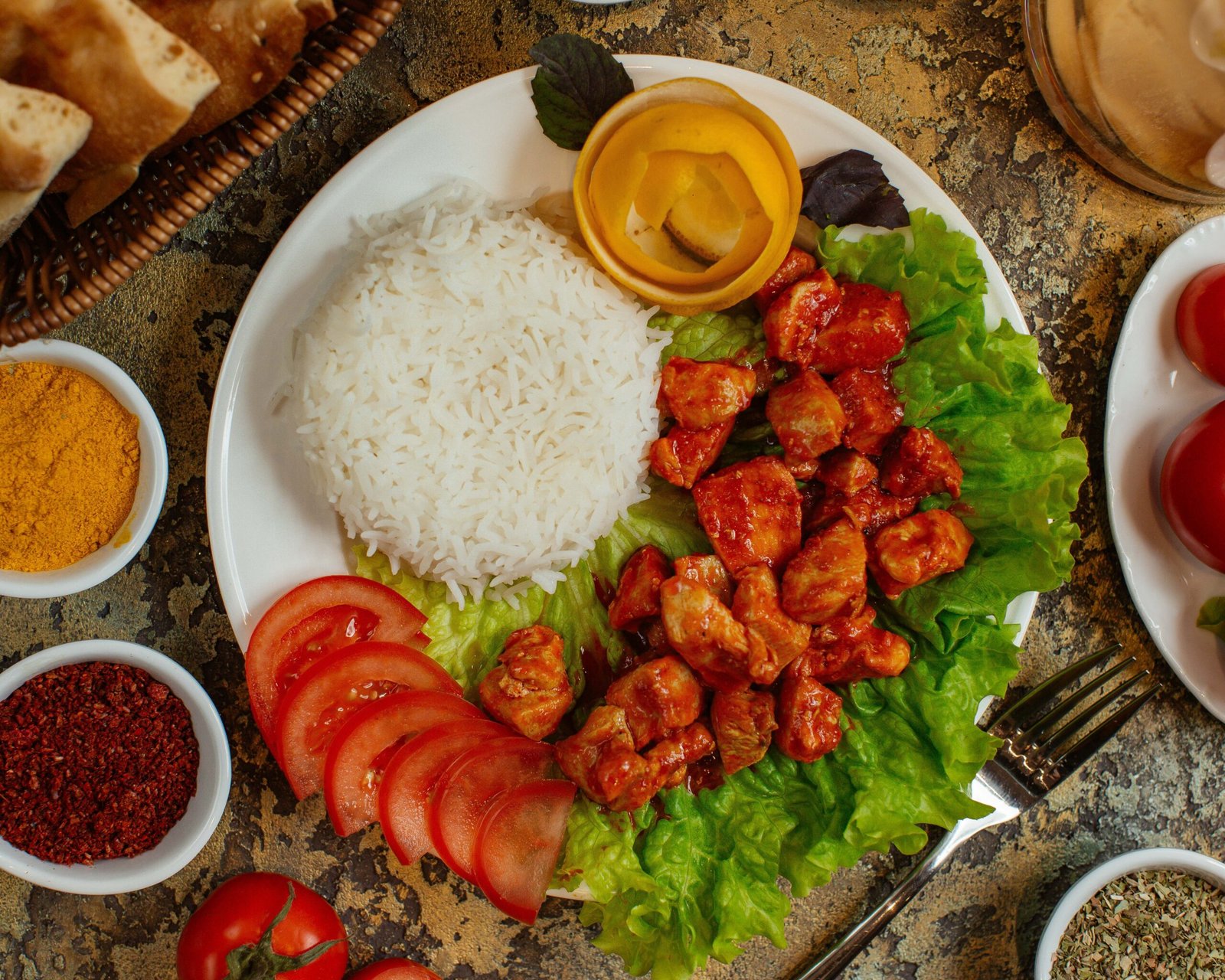Tanzanian food is full of variety and flavor. In this guide, you will learn about the history, staple foods, traditional dishes, street food, dining customs, modern restaurants, and practical tips for visitors. Whether you are planning a trip to Tanzania or just want to learn more about its food culture, this article covers everything you need to know.
Historical and Cultural Influences
Tanzanian cuisine has grown over many years. The food here is influenced by local traditions as well as by traders from the Arab world, India, and Europe. These influences are seen in the use of spices, cooking techniques, and even in some recipes. Local communities also use ingredients that are grown in Tanzania, such as maize, cassava, and plantains. This mix of cultures has helped create a unique and practical food style that is both hearty and flavorful.
Staple Foods and Core Ingredients
The daily diet in Tanzania is built on a few basic ingredients.
Ugali is the most common staple food. It is a thick porridge made from maize flour and water and is served with many different dishes. Rice is also important, especially along the coast where it is often cooked with coconut milk and spices. Other essential ingredients include cassava, plantains, beans, and fresh vegetables. Spices such as cardamom, cinnamon, and cumin are used to add extra flavor without making the food too spicy for everyone.
Traditional Dishes and Meal Components
Breakfast
Many Tanzanians start their day with simple meals. Popular breakfast foods include:
- Mandazi: Fried dough that is similar to a doughnut. It is often eaten with tea.
- Chapati: A type of flat bread that is soft and light.
- Porridge or Vitumbua: Rice cakes or sweet porridge that can be enjoyed with a cup of chai (tea).
Lunch and Dinner
Hearty meals are a big part of Tanzanian life. Common dishes served at lunch and dinner include:
- Ugali with Stews: Ugali is served with vegetable, meat, or fish stews. It is used to scoop up the food.
- Nyama Choma: Grilled meat, usually goat or beef. It is lightly seasoned and served with sides like vegetables or salad.
- Pilau: A rice dish cooked with spices, meat, and vegetables. It is popular during celebrations.
- Chipsi Mayai: An omelette that mixes eggs with fried potatoes. This dish is a favorite street food.
- Ndizi Nyama: A dish where plantains are cooked with meat, creating a mix of sweet and savory flavors.
- Mchuzi wa Samaki: A fish stew made with tomatoes and coconut milk, common in coastal regions.
- Zanzibar Pizza: A type of stuffed flatbread that comes in both sweet and savory versions, popular on the islands.
For those who do not eat meat, many vegetarian and vegan options are available. Dishes like Maharage ya Nazi (beans cooked in coconut milk) and various vegetable stews provide good protein and nutrients.
Street Food and Snack Culture
Street food is an important part of the food scene in Tanzania. Vendors on busy streets and in local markets serve fresh and affordable food. Common street foods include:
- Mishkaki: Small skewers of marinated meat grilled over an open flame.
- Samosas: Fried pastries filled with vegetables or meat.
- Chipsi Mayai: Often served as a quick snack, this is a popular way to enjoy eggs and fries. Local women, known as “mama lishe,” often run small stalls where you can sample homemade recipes. Eating on the go is common in urban areas, and many of these snacks are both filling and inexpensive.
Dining Etiquette and Cultural Traditions
Dining in Tanzania is a social experience. Meals are often shared with family or friends around a common dish. Here are a few important customs:
- Eating with the Right Hand: It is customary to use your right hand when eating. The left hand is not used because it is considered less clean.
- Handwashing: People usually wash their hands before and after meals, especially when eating foods like ugali.
- Sharing Meals: Meals are often served in a large dish for everyone to share. This encourages a sense of community.
- Respecting Local Customs: In some areas, it is not common to eat while walking in public. Instead, meals are enjoyed at designated eating areas or restaurants.
Modern Culinary Scene and Restaurants
In larger cities such as Dar es Salaam and Arusha, traditional dishes are served alongside modern, international cuisine. Many restaurants offer a mix of local flavors and global trends. You will find:
- High-End Restaurants: Some hotels and lodges have restaurants that serve both traditional dishes and gourmet meals. These establishments often offer a comfortable, air-conditioned setting and modern service.
- Food Tours: Guided tours that take visitors to local markets, street food stalls, and restaurants are popular. These tours provide insight into how food is prepared and the ingredients that make Tanzanian cuisine unique.
- Fusion Cafes: Cafes and bistros often blend local recipes with international influences. They are a good choice if you want to try something new while still enjoying familiar flavors.
Food Costs, Nutrition, and Economic Aspects
Food in Tanzania is generally affordable, though prices can vary. Local meals and street food are often very inexpensive, while dining in high-end restaurants will cost more. Many safari packages include meals, meaning that if you are on tour, breakfast, lunch, and dinner are often part of the overall price.
Nutrition is an important issue in Tanzania. While there is an abundance of fresh food, some rural areas still struggle with malnutrition. However, staple foods like ugali, rice, and fresh vegetables provide many people with the energy needed for daily work.
Culinary Tourism, Food Festivals, and Experiences
Food plays a major role in Tanzania’s tourism. Visitors can enjoy a variety of experiences:
- Food Tours and Cooking Classes: Learn how to prepare traditional dishes from local chefs.
- Market Visits: Explore local markets where fresh produce, spices, and other ingredients are sold.
- Food Festivals: Attend festivals that celebrate Tanzanian cuisine, where you can taste a wide range of dishes and learn about food traditions.
- Coffee Tours: The region is famous for its coffee. Guided tours of coffee plantations show you how coffee is grown and processed, and you can sample freshly roasted beans.
Practical Tips for Visitors
If you plan to try Tanzanian food, keep these tips in mind:
- Ask Locals for Recommendations: Locals can point you to the best street food stalls and restaurants.
- Be Open to New Flavors: While some dishes may seem unusual at first, give them a try—you may discover new favorites.
- Plan for Dietary Needs: Most restaurants can cater to vegetarian, vegan, or gluten-free diets if you ask in advance.
- Food Safety: Choose busy, popular stalls where the food is made fresh. Always drink bottled or boiled water.
- Learn Basic Swahili Phrases: Simple phrases can help you when ordering food or asking for recommendations.
Frequently Asked Questions (FAQs)
What is the signature dish of Tanzanian cuisine?
Ugali is considered the signature dish. It is served with a variety of stews and is a staple for many meals.
How spicy is Tanzanian food?
The food can be mildly spicy or more heavily spiced, depending on the dish and the region. Most dishes are balanced with fresh vegetables and are not overwhelmingly hot.
Are there many vegetarian options?
Yes. Many traditional dishes use beans, vegetables, and fruits. Restaurants often have vegetarian options, and dishes like Maharage ya Nazi are popular among those who do not eat meat.
What should I expect when dining with locals?
Meals are a time for family and community. You may share dishes from a large plate and eat using your right hand. It is polite to wait until everyone is served before you begin eating.
How much does it cost to eat out in Tanzania?
Local meals and street food are very affordable, often costing only a few thousand Tanzanian Shillings. High-end restaurants and hotels charge more, especially in major cities.
Conclusion and Call to Action
Tanzanian cuisine offers a unique blend of history, culture, and fresh ingredients. From the everyday staple of ugali to the exciting flavors of street food and modern fusion dishes, there is something to suit every taste. Whether you are a traveler looking to explore new foods or a local wanting to learn more about your heritage, Tanzanian food has a rich story to tell. Plan your trip, explore local markets, try the street food, and enjoy the full experience of Tanzania’s culinary delights. For more information on food tours or to get recommendations on where to eat, reach out to local travel experts or tour operators. Enjoy your culinary adventure in Tanzania!




